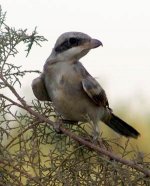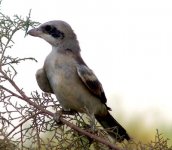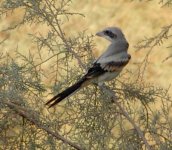I photographed this bird in Riyadh, Saudi Arabia.
It was perching over a river bank.
It is about sparrow size.
I have been adivised that it is probably an immature Lesser Grey Shrike, could you confirm this for me so that I can name the JPG file.
Thank you in anticipation.
Barbara B
It was perching over a river bank.
It is about sparrow size.
I have been adivised that it is probably an immature Lesser Grey Shrike, could you confirm this for me so that I can name the JPG file.
Thank you in anticipation.
Barbara B







